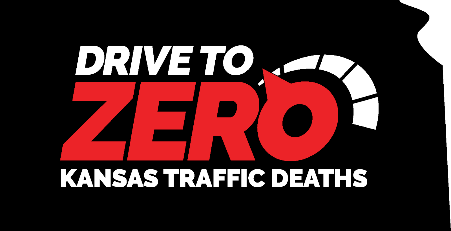Springtime means cone zones – and work crews making improvements to Kansas highways and interstates.
Ashley Perez, Public Affairs Manager with the Kansas Department of Transportation joined in on the KSAL Morning News Extra with a reminder to motorists to slow down and take care inside those areas this spring and summer.
For 25 years, National Work Zone Awareness Week (NWZAW) has heralded the start of the spring and keeping workers safe. Perez added there are several ways to plan for work zones delays and safety.
Reroute. Avoid traveling through work zones, if possible. Otherwise, allow extra time for possible delays and
travel safely.
travel safely.
Avoid distractions. Workers are focused on their jobs in work zones; be vigilant behind the wheel to safely travel
through the work zone by putting down your phone and paying attention while driving.
through the work zone by putting down your phone and paying attention while driving.
Reduce speed. Follow speed limits to make driving through narrow lanes and lane shifts easier and safer for you
while keeping workers safe.
while keeping workers safe.
Be aware of workers. The work area is often very close to travel lanes, so please be considerate: Take care and
slow down when you see workers.
slow down when you see workers.
Watch for pedestrians and bicyclists. Work zones often restrict where nonmotorized road users can travel. In
2022, 145 persons on foot and bicyclists lost their lives in work zone crashes.2
2022, 145 persons on foot and bicyclists lost their lives in work zone crashes.2
Give large vehicles space. Narrow lanes, unexpected lane shifts, and longer braking distances are challenges
for large vehicles. Allow extra space for them to safely navigate work zones. In 2022, 30 percent of fatal work zone
crashes involved commercial motor vehicles (CMVs), which include large trucks and buses.*3 Take care around
large construction vehicles, which may be driving at slower speeds to enter and exit the work area.
for large vehicles. Allow extra space for them to safely navigate work zones. In 2022, 30 percent of fatal work zone
crashes involved commercial motor vehicles (CMVs), which include large trucks and buses.*3 Take care around
large construction vehicles, which may be driving at slower speeds to enter and exit the work area.
Stay alert. Be prepared for sudden stops. Work zones may cause unexpected slowdowns. In 2022, 21 percent of
all fatal work zone crashes involved rear-end collisions
all fatal work zone crashes involved rear-end collisions



